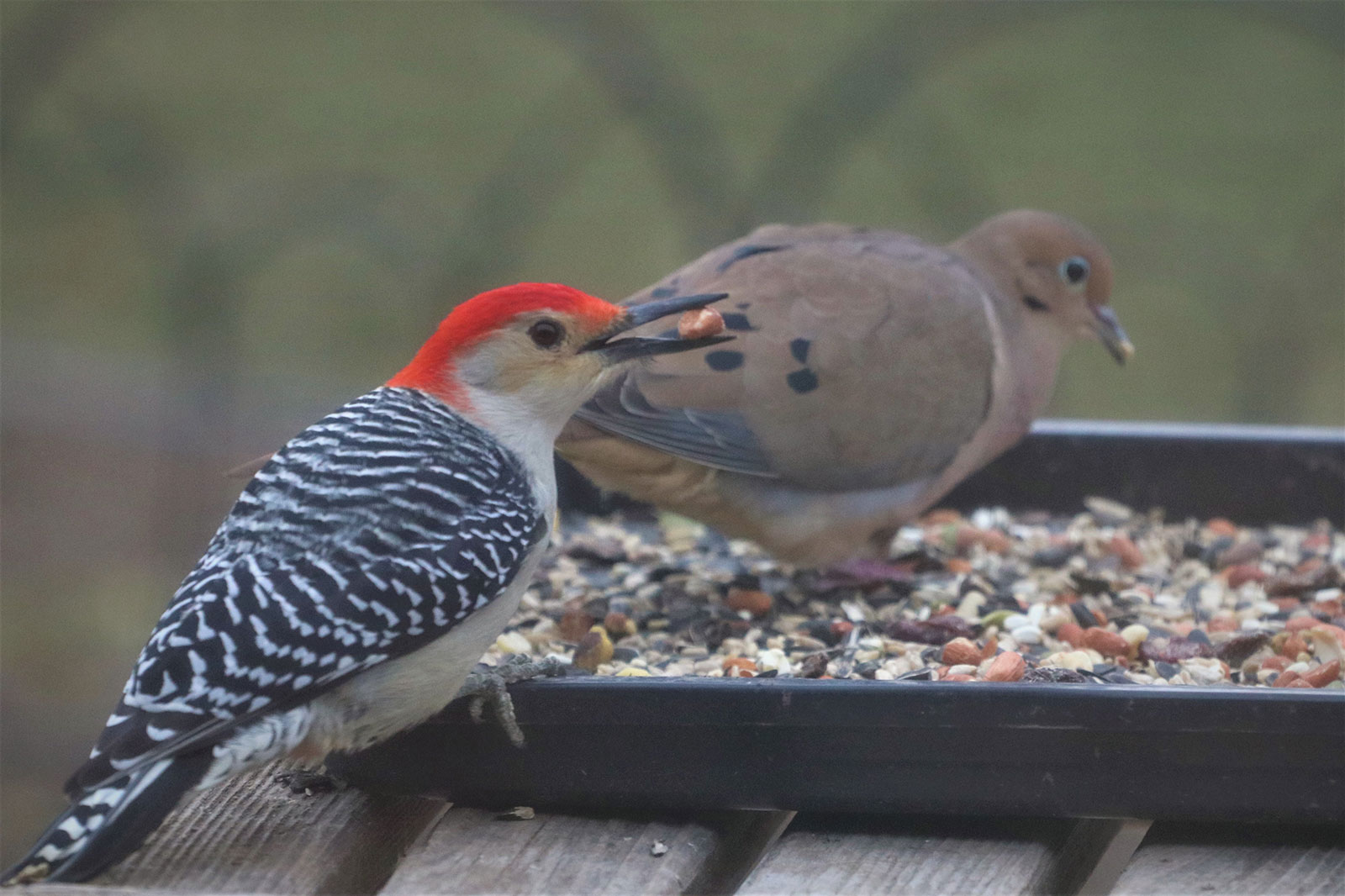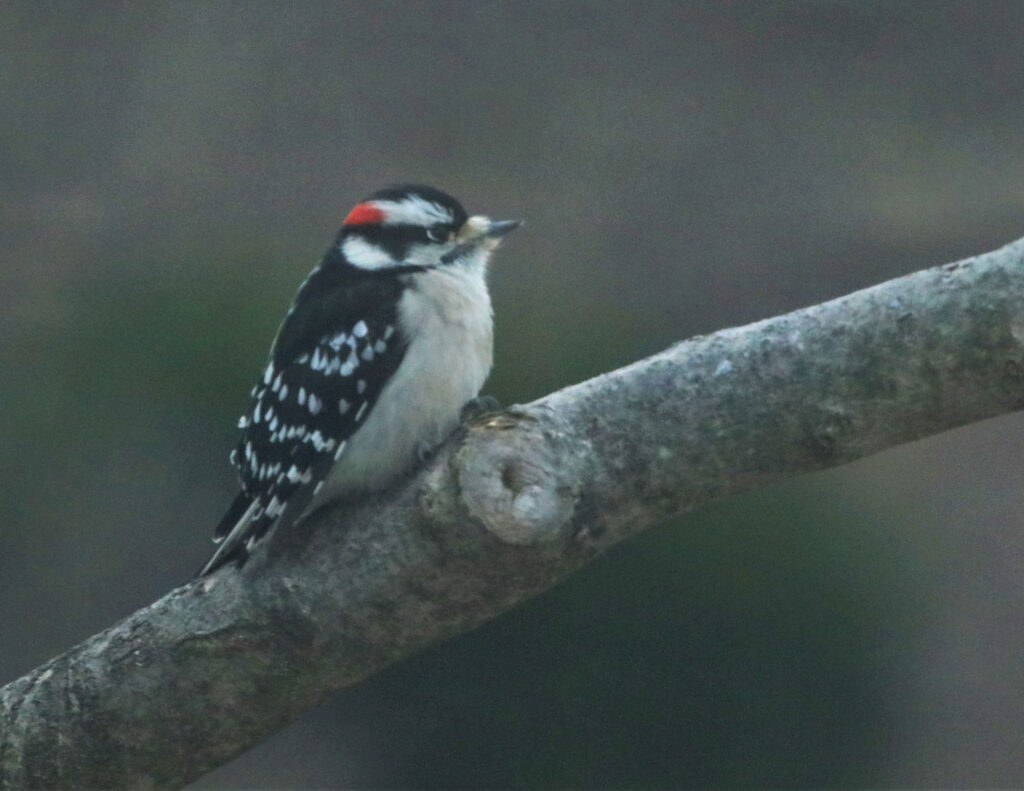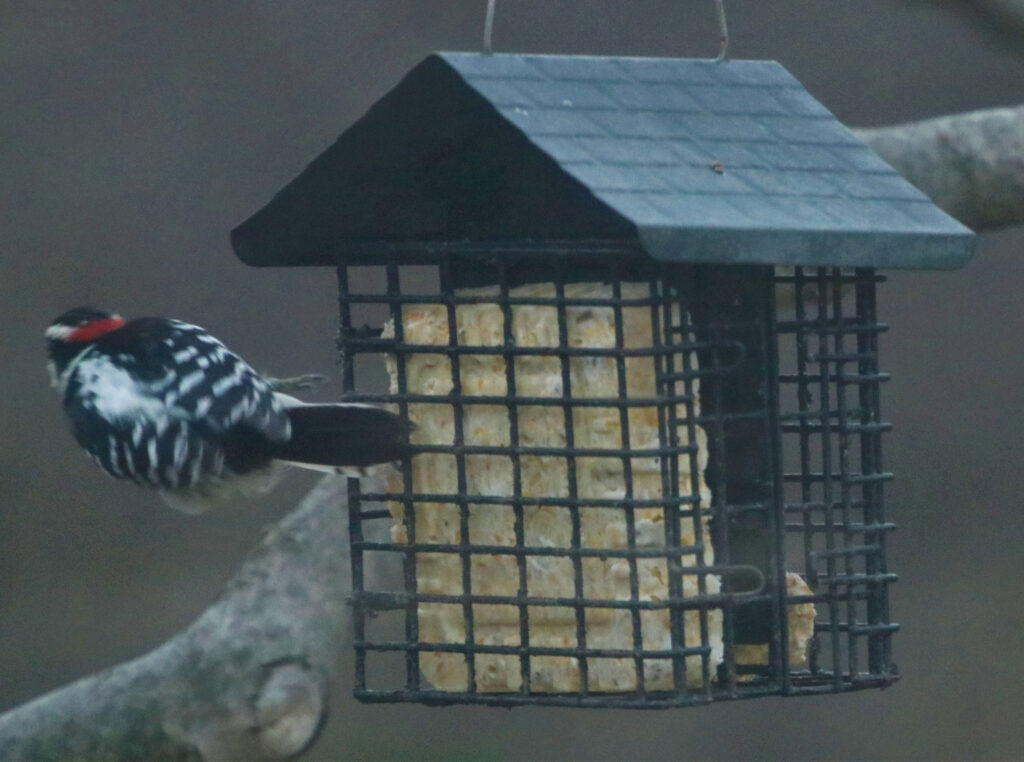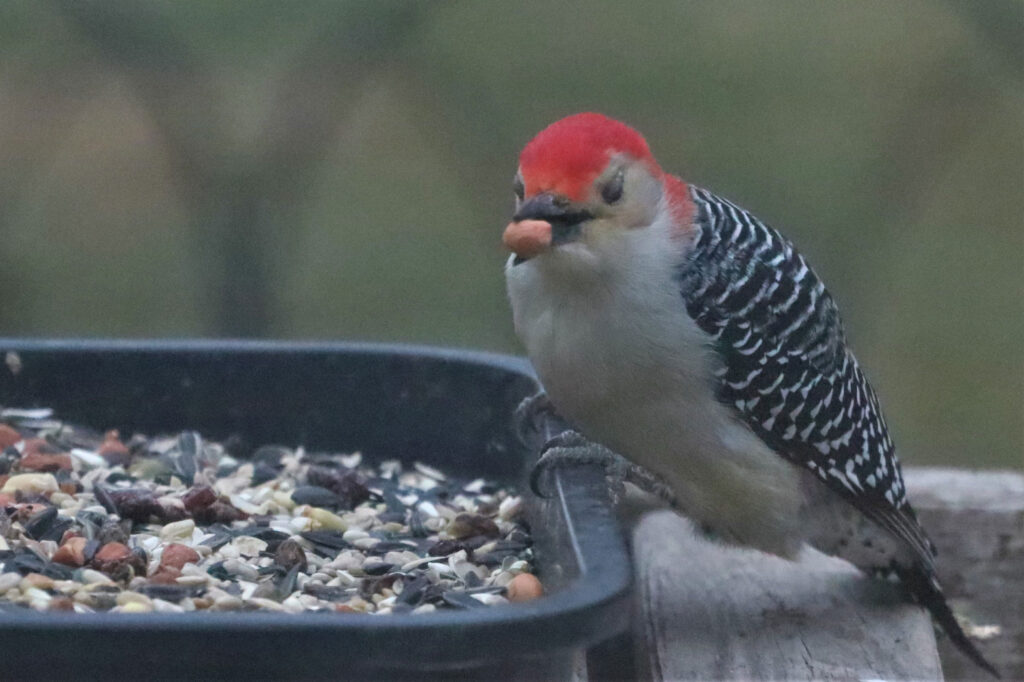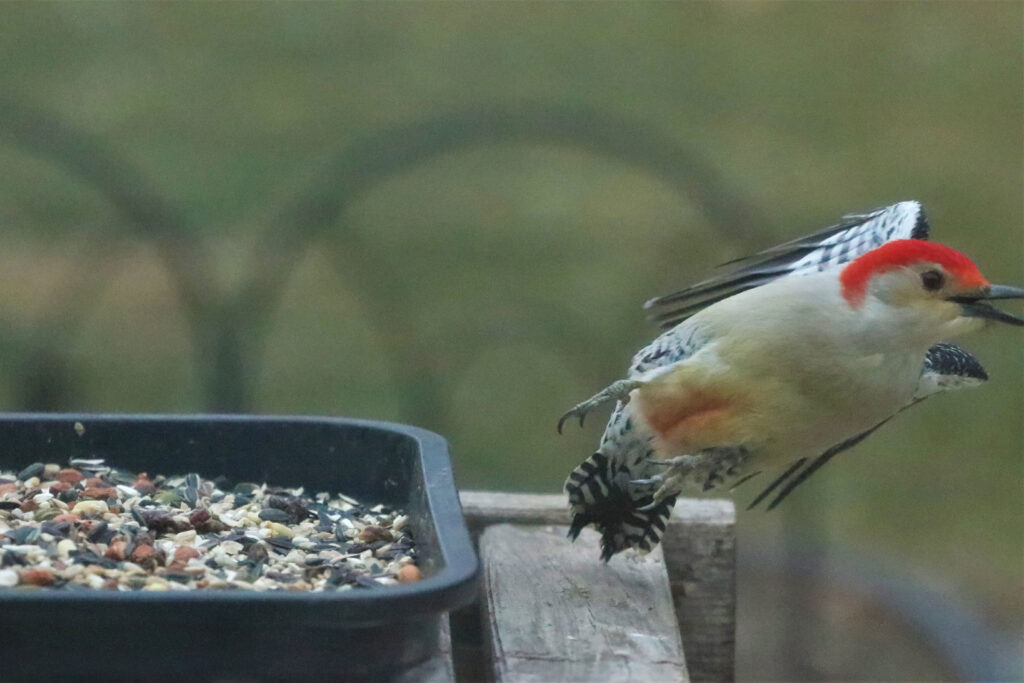As we officially enter the winter season, I continued my yearly ritual of feeding the local wild bird population and posting pictures of my feathered friends visiting our feeders.
I went to the store and purchased some nut and berry bird mix because I knew from years past this would draw out the most interesting birds from our backyard wood lot. I also purchased some high-energy suet to draw in my favorite backyard visitors, the woodpeckers!
When I got home, I went about the business of setting up the perfect bird feeding station to take pictures of the birds without them knowing I was there. I did this by using a plastic boot holder that’s meant to keep your wet boots from melting snow all over your floor in the wintertime.
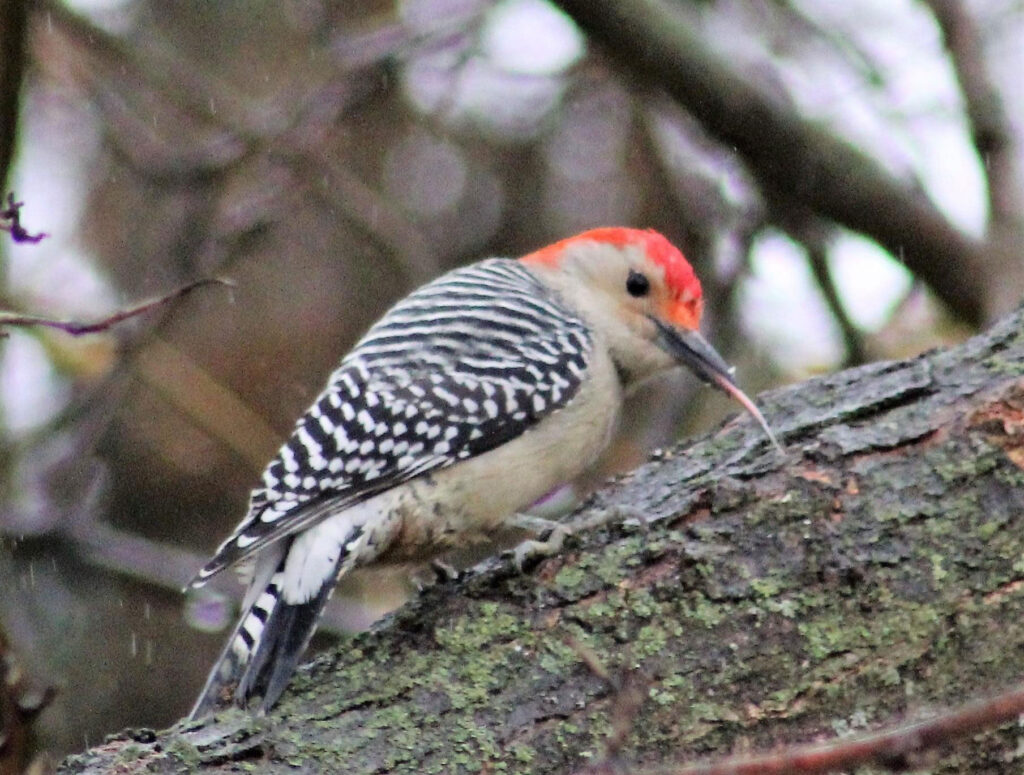
PHOTO: ANNIE KAMOSKE
I affixed it to a metal frame that I had and set it up on the other side of our sliding glass door. The door has a protective film on the windows to prevent people from looking into your house while still allowing you to see outside.
Turns out it’s a type of UV protectant film that functions just like a UV filter when photographs are taken through it. This allowed me to set up my tripod and take some stunning photographs of the birds visiting the feeders.
The plan worked and I soon began to see a variety of songbirds and others. The ones that made me the happiest were the woodpeckers, though.
Did you know that there are eight varieties of woodpeckers in Wisconsin? It’s true. There are downy woodpeckers, hairy woodpeckers, red-bellied woodpeckers, red-headed woodpeckers, black-backed woodpeckers, northern flickers and pileated woodpeckers.
There are even yellow-bellied sap suckers, but they don’t stick around for the winter months. You may have heard the repetitive drumming in the woods of a woodpecker right here in Kenosha. That’s because we have several types of woodpeckers in our area.
Here is some information related to the ones you’ll most likely see if you decide to feed them, like I have.
In Wisconsin, it’s the diverse range of habits that enables many species of woodpeckers to call Wisconsin home at all times of the year.
Let’s begin with the downy woodpecker.
Downy woodpeckers can be found year-round in Wisconsin and the one pictured here is the first woodpecker to show up at my suet feeder. Downy woodpeckers are a small species of woodpecker that can be found in wood lots, parks and gardens.
PHOTOS: THOMAS CORRAO
Compared to other woodpeckers, the downy woodpecker is normally the most likely to visit your feeder. They especially enjoy suet and sunflower seeds. Much like the larger woodpeckers, downy woodpeckers feature blocky heads and a familiar black and white plumage common to many other species.
When perched on a tree, they will have the same straight-backed posture as any other woodpecker. Downy woodpeckers, however, have shorter bills than most other species.
Next up we have the hairy woodpecker. Hairy woodpeckers look like downy woodpeckers, only with larger bills. They have the same black and white patterned plumage as a downy and are pretty common to the Kenosha area.
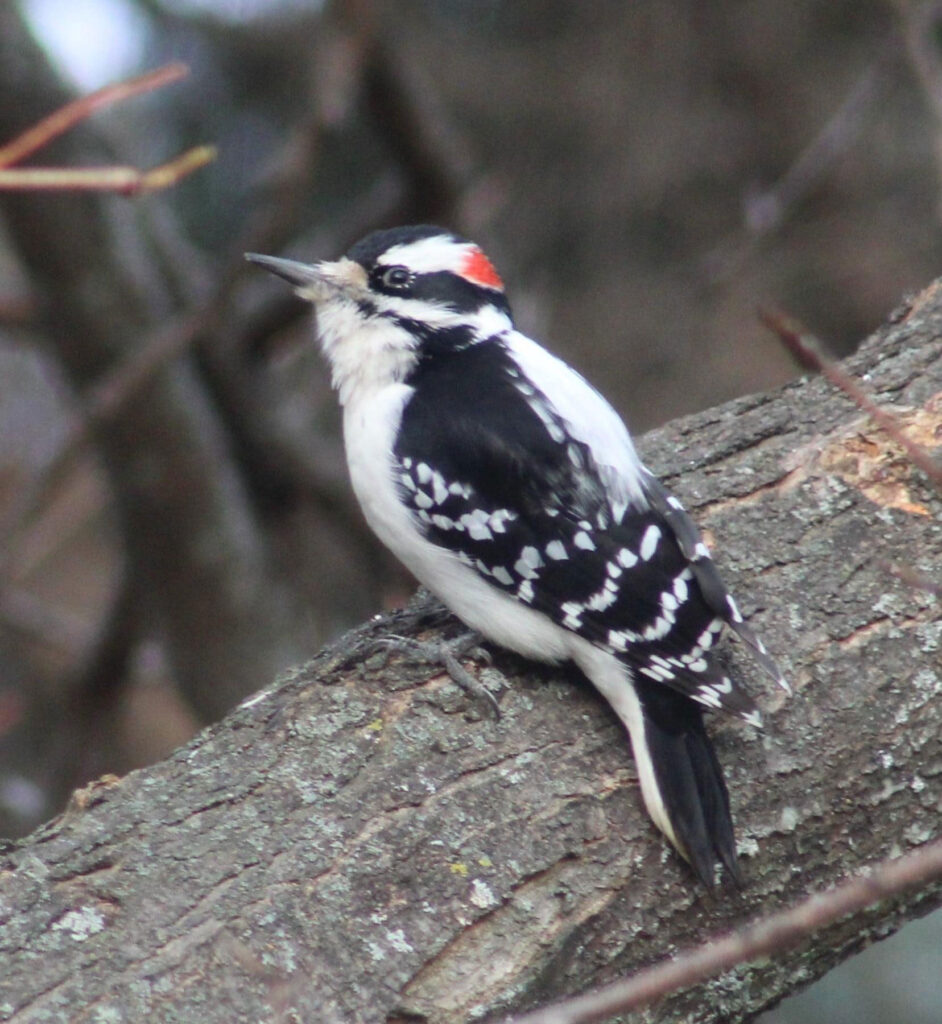
PHOTO: ANNIE KAMOSKE
You’ll be more likely to see a hairy woodpecker around taller trees so you’re more likely to see them in your backyard if you’re close to a wood lot with taller trees. Feeders will work to draw them into your yard.
These woodpeckers, like most woodpeckers, rely on wood-boring insects found underneath tree bark. Many times you can hear them energetically hammering on a tree before you will see them.
The last woodpecker that visited the feeder was a red-bellied woodpecker. Here we have a couple photos of him as he went back and forth between the fence and the feeder.
I kept my eye on him and saw he was hiding the spoils in the wooden fence. Red-bellied woodpeckers are found year-round throughout most of Wisconsin. They have bright red caps that stand out, as well as bold black barring on their backs. They do have a red patch on their belly, but it is not often visible.
PHOTOS: THOMAS CORRAO
If you look closely at the second photo you can see his reddish belly patch. These woodpeckers do have a unique trait of storing extra rations in tree cavities and holes to last them throughout the winter. They’re one out of only four other North American woodpeckers that share this behavior.
So these are the three out of eight woodpeckers that visited the feeder this past week. I know there are northern flickers around as they frequently visit my yard in search of grubs in the soil.
Unfortunately, they didn’t show up and I was unable to capture a photo of them.
Here is one more additional fun fact about all woodpeckers: A woodpecker’s tongue is so long that it wraps around its skull to protect its brain while it’s hammering away at a tree or other hard surface. This, combined with super strong neck muscles, plates of spongy bone in the skull that act like a football helmet, and a very small amount of cerebrospinal fluid surrounding their brain, all help to stop a woodpecker from scrambling it’s brain while pecking away with a force of over 100g.
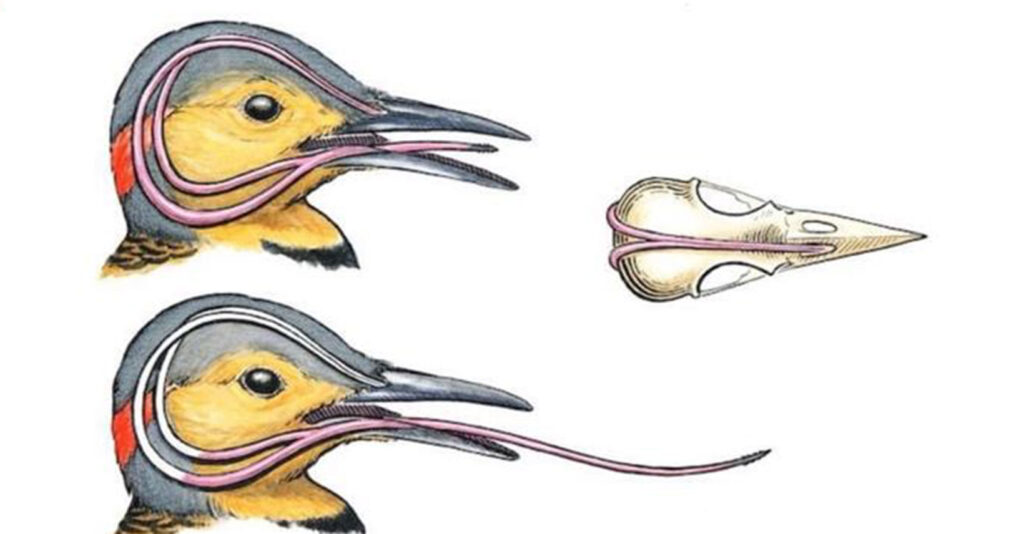
So, there we have it. A week’s worth of trying to capture photographs of backyard woodpecker visits.
I think capturing three species of eight potential woodpeckers isn’t bad for a short period of time. If you would like something fun to do this winter, I would suggest setting up your own bird-viewing area outside your favorite window. It will provide hours of enjoyment this winter and only require short visits out into the cold weather to restock the seed.
Until next week, I hope you all are well and will join me again in my next segment of Capturing Kenosha. Take care!

